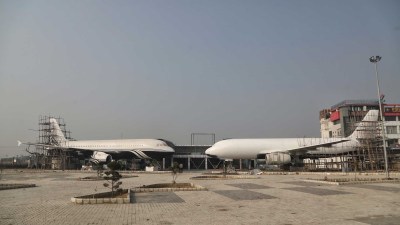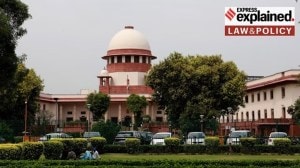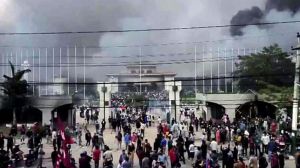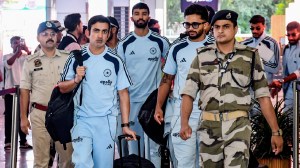The Night of the Sikhs
The Censor Board censored Ammu, a movie on the 1984 riots, so that the truth could be hidden. Justice Nanavati acted like a censor and censo...

The Censor Board censored Ammu, a movie on the 1984 riots, so that the truth could be hidden. Justice Nanavati acted like a censor and censored previous reports and affidavits to produce a report that absolves the guilty. History will judge Nanavati as someone who killed the riot victims a second time.
Five years for 45 pages! Surely it does not take five years to write 45 pages that contain nothing at all of the truth? My first objection to the Nanavati report is the title itself – ‘‘Probe 1984 Riots’’. Let us be very clear, these were not riots. Call it a massacre, pogrom, holocaust, but they were not riots. Riots occur when two communities fight it out in the street each armed and geared to attack each other. In 1984 a systematic attack was mounted by the political leadership, administration, and police on the Sikh community.
Secondly, Nanavati should have gone beyond the earlier inquiries. The previous committees and commissions had already submitted their recommendations. Even though the Sikh community was not satisfied with the earlier reports, the least the government could have done was act on these inquiries. Nanavati should have taken on from where the earlier committees left off, or where they were found lacking. But instead he has gone further back.
Let me illustrate how Justice Nanavati has actually receded away from the truth. The Kapur Mittal Committee, appointed in February 1987, submitted its report in 1990. It recommended the dismissal of 30 police officers, while 72 were identified for connivance or gross negligence. Instead of being punished, most of them got two or three promotions each. This was followed by the Jain Banerjee Committee, which recommended the registration of a case against Sajjan Kumar in August 1987. One of his associates appealed in the Delhi High Court seeking a stay, and the government did not oppose the stay. The committee has since then been quashed. The Potti Rosha Committee was a successor to Jain Banerjee committee, and it too recommended the registration of a case against Sajjan Kumar. The Jain Aggarwal committee came next and here too the recommendation was for the registration of cases against H K L Bhagat, Sajjan Kumar, Dharamdas Shastri and Jagdish Tytler. The Narula Committee in its report in January 1994 recommended the registration of cases against Bhagat, Sajjan Kumar and Jagdish Tytler.
So successive committees had already recommended the registration of cases against Bhagat, Tytler, Sajjan Kumar and Dharamdas Shastri. But Justice Nanavati goes about trying to lessen their crime and even tries to exonerate them. He is silent on the role of the Congress party as a whole in the riots. First: ‘‘But for backing and help of influential and resourceful persons, killing of Sikhs so swiftly and in large numbers could not have happened’’. The Nanavati Report also indicates that there was an organised effort to (1) Bring in outsiders (2) Provide them with weapons (3) Get inflammable material (4) Identify houses of Sikhs so that these could be targeted. However, all this is dismissed by saying that Congress (I) leaders did what they did ‘‘for personal political reasons’’.
What personal reasons could Congress have to target Sikhs? Nanavati does not answer this question. The report says that all the above four items require planning and organised effort, and local Congress leaders were involved all over Delhi, in perhaps every police station in the city. And yet, the Congress is not involved! The report is full of affidavits where numerous Congress leaders have been named. Why did the Commission choose to ignore these leaders? For instance on page 27 Jaya Jaitley names Congress leader Rampal Saroj and refers to H.K.L.Bhagat. On page 31, an affidavit tells us about Dharamdas Shastri and Rajinder Kumar Shukla, where Shastri ordered his men ‘‘to get more persons and kill Sikhs’’. On same page we are told that Shastri was leading a mob of 1000 persons. On page 32, an affidavit points towards Shastri telling people to kill ‘‘all Sikhs’’. The very next page has four other local Congress leaders being named including Shastri again. Here we also have a reference to a DTC bus with the vehicle number being mentioned. Nanavati could have got the records of the bus and summoned the driver, conductor etc. How could the Commission ignore all these?
The role of Kamal Nath and Vasant Sathe also needs further probing. Though Nanavati concedes that Kamal Nath was very much present in the crowd that assembled in front of Gurudwara Rakab Ganj and attacked it, he chooses to go no further! Half a dozen prominent personalities have accused the Home Minister of deliberately sleeping through the riots, including Patwant Singh, Ram Jethmalanai, Kamini Jaiswal, Ram Vilas Paswan, etc. A single affidavit by Narasimha Rao is accepted as defense and all these accusations are ignored.
The role of the then Home Minister Narasimha Rao and his department should be the subject of a separate probe. Perhaps the most incompetent Home Minister India has ever produced, out-doing even P.C. Sethi, was later elevated by the Congress to the post of Prime Minister. And what was his achievement as Prime Minister? Allowing the Babri Masjid to be demolished. History books will henceforth have two questions, both of which have the same answer: Who was the Home Minister of India when the November 1984 massacre took place? Who was the Prime Minister of India when the Babri Masjid was demolished?
The writer is a MLA of the Shiromani Akali Dal from Gidderbaha


- 01
- 02
- 03
- 04
- 05





























